Bonhams to Sell White Gold: One of the Finest Collections of Meissen in the World
The preferred gifts of kings, Meissen porcelain, from many of the noble houses of Europe, will be sold at Bonhams on November 25 2009 when the first part of the Hoffmeister Collection is auctioned.
The world-famous Hoffmeister Collection was assembled over the last 40 years by two German brothers who have a passion for this rare 18th-century porcelain. Considered one of the finest collections of Meissen in the world, for the past ten years it has been on view at the Museum für Kunst und Gewerbe in Hamburg, one of Europe's leading museums of applied arts. Bonhams will sell the collection in three sales, the first this year in November and two subsequent sales next year.
The Hoffmeister Collection is a survey of the decoration of Meissen porcelain during the first 50 years of the manufactory's existence, when Meissen dominated the taste for porcelain across Europe. It illustrates the quality and variety of the oldest porcelain manufactory in Europe. The collection includes the largest and most important group of 18th-century Meissen armorial porcelain anywhere in the world. The provenance of many pieces is equally distinguished, with examples formerly owned by some of the greatest collectors of the last 150 years, such as Maurice de Rothschild, Ludwig von Darmstaedter and Erich von Goldschmidt-Rothschild.
Sebastian Kuhn, European Ceramics Senior Specialist at Bonhams, says: "It would no longer be possible to assemble such a broad-ranging collection of this quality and condition; and some of the pieces are of such rarity that comparable examples are unlikely ever to appear again on the market."
Featured in the collection are items made for kings, tsars and popes:
Augustus the Strong, Elector of Saxony and King of Poland
The founder and owner of the Meissen factory was also its biggest customer. He suffered from the 'maladie de porcelaine', and assembled a vast collection of Chinese and Japanese porcelain, as well as, from 1710, Meissen from his own factory. He is famously said to have traded a real regiment of Saxon soldiers for a set of Chinese vases with the king of Prussia. Augustus conceived a magnificent "porcelain palace" to house his collection on the bank of the Elbe river in Dresden. The Hoffmeister collection includes numerous pieces marked with inventory numbers from this palace, which can be traced to the surviving inventories of the 18th century.
A very rare Meissen armorial two-handled beaker and saucer from the service for the Elector Clemens August of Cologne, dated 1735. photo Bonhams
Each superbly painted with a chinoiserie scene on a gilt scrollwork bracket filled with Böttger lustre and enclosing a quatrelobe purple monochrome estuary scene, the saucer with two figures and a child holding the gilt CA monogram, the beaker with a figure and two children by a notice on a tree inscribed 'Clement/ August/ 1735', the reverse of the saucer with the Elector's Coat-of-Arms, gilt scrollwork borders to rims, the beaker: 6.7cm high, the saucer: 12.8cm diam., crossed swords marks in underglaze-blue, impressed (unidentified) Dreher's mark of an asterisk (2) - Estimate: £35,000 - 50,000
Provenance: Probably ordered by the Elector Clemens August of Cologne in 1735;
Recorded in February, 1761, in the Indianisches Haus in Brühl, and moved to Bonn the same year;
Purchased at the auction of the late Elector's possessions at the Bonn Residence by Hofrat Vogel in the name of Herr von Derme in March 1764;
Anon. sale, Christie's Geneva, 16 November 1992, lot 350;
Acquired in the above sale
Literature: Hoffmeister 1999, II, no. 311;
Iwe 2005, pp. 30 and 43;
Unterberg 2005, p. 61, ills. 12 and 13
Exhibited: Hamburg, Museum für Kunst und Gewerbe, 1999-2009
This beaker and saucer bear the coat of arms of Clemens August of Bavaria, Elector of Cologne (1700-1761). Born in Brussels, he was the fourth son of Elector Maximilian II Emanuel of Bavaria and Teresa Kunegunda Sobieska, and the grandson of King Jan III Sobieski of Poland. Following his theological studies, Clemens August became a priest in 1725 and was made a bishop by Pope Benedict XIII in 1727. By virtue of his birth, he had already become Bishop of Münster and Paderborn in 1719, and in 1723, he became Archbishop and Elector of Cologne and was elected Bishop of Hildesheim the following year. In 1728, he was elected Bishop of Osnabrück, and in 1732, he was elected Grand Master of the Teutonic Order. He thus accrued enormous power and wealth in both the religious and secular spheres, and is renowned to this day for his patronage of the arts, his elegant court, and his magnificent castles, such as Augustusburg and Falkenlust in Brühl, and Clemenswerth near Osnabrück.
The celebrated tea, coffee and chocolate service of which this beaker and saucer formed a part, has recently been the subject of detailed studies by Thomas Iwe and Michael Unterberg (see Literature), and has also been considered in the context of diplomacy between the courts in Dresden and Cologne (Köhler 2007), on which the following note is mostly based.
The Saxon ambassador at the electoral Court in Cologne, Heinrich Balduin von Schenk, reported in the late 1720s that Clemens August held Meissen porcelain in high regard, and suggested at least twice that Augustus the Strong should make him a gift of porcelain (Köhler 2007, pp. 200-201). Despite this, it appears that this magnificent service, with its unique and highly personal scheme of chinoiserie figures paying homage to Clemens August, was most likely commissioned by the Elector, rather than a gift from the Dresden Court, with which relations were then strained. The inventory made after the Elector's death in 1761, records that the service was housed in the Indianisches Haus, a chinoiserie house in the park of Schloss Augustusburg, the third in Europe after Augustus the Strong's Japanese Palace and Schloss Pillnitz. The informal atmosphere that prevailed there may have been appropriate to the service, the decoration of which may also be read as a caricature of court ceremonial (Köhler, op. cit., p. 202).
The service originally included twelve such beakers and saucers; for a comprehensive description of the service, and the current whereabouts of the pieces, see above Literature. Another double-handled beaker and saucer from this service, previously sold at Sotheby's London, 29 June 1982, was sold at Christie's London, 11 December 2007, lot 105.
A Meissen armorial two-handled beaker and saucer from the service for Queen Ulrika Eleonora of Sweden, circa 1732. photo Bonhams
Each superbly decorated with the arms of Queen Ulrika Eleonora of Sweden, the beaker with a harbour scene on the reverse depicting Oriental figures, within a shaped gilt scrollwork cartouche enclosing Böttger lustre and embellished with iron-red and purple scrollwork, the handles half gilt, the saucer with sprigs of indianische Blumen on the reverse, gilt foliate scrollwork borders to the rims, the saucer: 12.9cm diam., the beaker: 7cm high, crossed swords marks in underglaze-blue (within concentric circles on the beaker), impressed Dreher's mark of two dots (for Johann Martin Kittel) on the saucer (2) Estimate: £30,000 - 40,000
Provenance: Ordered by Augustus the Strong, probably in late 1732;
Given by Augustus III of Poland and Saxony to Queen Ulrika Eleonora of Sweden in May 1734;
Transferred to the Royal Wardrobe after Queen Ulrika Eleonora's death in 1741;
Anon. sale, Auktionverket Stockholm, 1 December 1992, lot 5249;
Anon. sale (A European Private Collection), sold Sotheby's London, 17 June 1997, lot 52;
Acquired in the above sale
Literature: Hoffmeister 1999, II, no. 314;
Ljungström 2007, p. 271, n. 24
Exhibited: Hamburg, Museum für Kunst und Gewerbe, 1999-2009
Part of a lavish gift of Meissen porcelain presented to Queen Ulrika Eleonora of Sweden in late May, 1734, by a Swedish colonel in the Saxon Swiss Guards, Count Axel Cronhielm, on behalf of Augustus III, King of Poland and Elector of Saxony. The gift, which consisted of several services and sets of decorative objects, is mostly still preserved in Swedish collections (see Ljungström 2007). Queen Ulrika Eleonora (1688-1741), the daughter of Charles XI, reigned in her own right for only a short time, between the death of her brother in November 1718, and February 1720, when she abdicated in favour of her husband, Friedrich, Landgrave of Hessen-Kassel (Frederik I of Sweden). The political and diplomatic purpose of Augustus III's gifts to Queen Ulrika Eleonora and her husband, lie in his manoeuvrings to succeed his father as king of Poland, although he himself claimed in his letter to the queen that the initiative for the gift has been his father's (see Ljungström, op. cit., for a comprehensive discussion).
The Meissen manufactory archives include a list dated 1st February 1733 of finished and unfinished porcelain for the gift to Sweden ('Was vor Ihro Königl. Majestät in Schweden an Porcellain Geschirren bereits verferttiget und noch zu verferttigen ist..'), which indicates that the present tea and chocolate service for the Queen had already been finished: '2 Thee- und Chocolade-Servise, als: 1 fein emaillirtes mit Seefahrten, Landschaften und Wappen (ist verferttiget und geliefert)..' (2 tea and chocolate services, as: 1 finely enamelled with sea journeys, landscapes and arms (is completed and delivered). An earlier report of August 1732 indicates that one tea service (as well as a small table service and two chimney garnitures) has already been completed (quoted by Reinheckel 1989, p. 196, no. 66).
An undated document quoted by Rainer Rückert suggests that the gift to Sweden was ordered by Augustus the Strong personally during a visit to Meissen before mid January 1733 (Rückert 1996, p. 86).
It is interesting to note that the service for Queen Ulrika Eleonora was described in 1733 as a 'tea and chocolate service' even though it did not include a cylindrical chocolate pot, but rather the tall form usually described as a coffee pot. It seems likely that the 'coffee pot' form was also on occasion intended as a chocolate pot (Reinheckel 1989, p. 59; Ljungström 2007, p. 267).
An important Meissen circular stand, circa 1725-30. photo Bonhams
Superbly painted in enamels and Böttger lustre with a central scene of a chinoiserie figure flanked by flowering indianische Blumen and rockwork enclosed by iron-red circles and a broad band of gilt foliate scrollwork, the rim with four gilt-edged quatrelobe chinoiserie cartouches edged with Böttger lustre and iron-red scrollwork, separated by gilt foliate scrollwork, the reverse with trailing indianische Blumen and butterflies, 22.2cm diam., crossed swords mark in underglaze-blue - Estimate: £30,000 - 40,000
Provenance: Anon. sale, Sotheby's London, 16 June 1987, lot 97;
Acquired in the above sale
Literature: Hoffmeister 1999, I, no. 50;
Lübke 2008, pp.10-16
Exhibited: Hamburg, Museum für Kunst und Gewerbe, 1999-2009
This circular stand is notable not only for the exceptional quality of the chinoiserie painting, but also for the intriguing 'HO' monogram painted in iron-red on the reverse above the crossed swords. See Dieter Hoffmeister's discussion of the piece (Hoffmeister 1999, I, pp. 96-97), including the theory first advanced by Dr. Ingelore Menzhausen, that the monogram could be read 'JCHO' for the painter, Johann Christoph Horn, who was active at the manufactory from 1720. The acquisition of this and a similar stand with the same mark (Hoffmeister 1999, I, no. 49) led to the discovery of the matching tureens and covers, both marked with the same monogram. One, from the collection of the 19th-century Dresden collector, Carl Spitzner, is in the Dresden porcelain collection in the Zwinger (Inv. nr. PE 1504, illustrated by Pietsch 1996, no. 134, and Lübke 2008, ill. 9), and the other is in the Giuseppe Gianetti Collection in Saronno, which was formed in the 1930s and 1940s (Bruni / Molfino 1994, no. 59).
Diethard Lübke has recently discussed the tureens and stands in detail (see Literature), including the monogram. He argues (pp. 10-16) against the idea that HO is a painter's signature, not least because several hands including the gilder's are involved, and suggests that the monogram signifies that the tureens and their stands were prizes awarded during the Dresden carnival season. If the monogram is read not as 'H' and 'O', but as representing the zodiac sign of Pisces and the sun, respectively, the 'monogram' can be seen as emblematic of the sun in the constellation of Pisces, that is between 20-21 February and the 20th March, which is when the Dresden carnival took place. In this reading, the sun can also stand for Augustus the Strong, presumably the donor of the prize. Lübke also cites the example of Vienna, where prizes such as porcelain tureens and stands were regularly awarded in shooting contests, and were considered worthy of the Empress herself.
A very large Meissen charger from the Sulkowski service, circa 1735-38. photo Bonhams
Painted with two shaped escutcheons with the arms of Sulkowski and Stain zu Jettingen, flanked by rampant lion supports standing on a stepped plinth above a puce panel with gilt scrolls, the arms of Sulkowski with the sash and badge of the Order of the White Eagle, the well of the plate with scattered indianische Blumen within a Sulkowski Ozier moulded border, 42.5cm diam., crossed swords in underglaze blue, incised V (in very good condition) Estimate: £30,000 - 40,000
Provenance: Acquired in 1973
Literature: Hoffmeister 1999, II, no. 345
Exhibited: Hamburg, Museum für Kunst und Gewerbe, 1999-2009
The Sulkowski Service was the Meissen manufactory's first magnificent and large, privately commissioned armorial service to have been designed to order, preceding the more famous Swan Service by several years, and was the first that was not intended for the Elector/King.
Alexander Joseph Graf von Sulkowski (1695-1762) was born into a prominent Polish noble family and entered royal service as a page at the Warsaw court. From 1711, he was raised in the household of the Electoral Prince Friedrich Augustus, the heir of Augustus the Strong, of whom he became a close friend. He accompanied the Prince as Master of the Horse on his travels for seven years from 1712, including his tours of Italy, France and Catholic German states, and subsequently became the head of the Prince's household. He became a Gentleman of the Bedchamber in 1726, was raised to a (Polish) count in 1732, and, following the accession of Friedrich Augustus in 1733, was made Privy Councillor, Minister of State, Cabinet Minister and an Imperial Count. Sulkowski was the first Pole to achieve such a position of power: he was in charge of most Court offices, and was responsible not only for the Green Vaults, which held the treasures of the Wettin dynasty, but was also in charge of the porcelain deliveries to the Japanese Palace. Sulkowski also was the recipient of numerous gifts and orders from both Augustus the Strong and his successor, Friedrich Augustus, including Schloß Übigau and the Flemmingsche Palais in Dresden, as well as the Polish Order of the White Eagle and the Order of St. Heinrich. Even Heinrich Graf von Brühl, Sulkowski's better-known successor and the receipient of the famous Swan Service, was subordinate to Sulkowski until the latter's fall from grace in February 1738.
The long-held supposition that Brühl saw Sulkowski as a rival and engineered his downfall has recently been questioned by Dr. Rainer Rückert, who has suggested that the cause of the Elector and King's displeasure with Sulkowski, was probably that he used the Meissen manufactory for his own benefit without informing the manufactory commission or the King. Not only did he order a porcelain armorial service to be made for himself of princely magnificence but he even had it delivered to the King's own porcelain palace, the Japanese Palace (R.Rückert, Biographische Daten der Meißener Manufakturisten des 18. Jahrhunderts, pp.267-269).
Sulkowski married (firstly) in 1728 a Lady in Waiting of the Electoral Princess, Maria Anna Franziska Catharina Freifrau von Stein zu Jettingen (1712-41), whose arms appear on the service together with those of her husband. The first explicit mention of the service in Kaendler's work notes (Arbeitsberichte) appears to be the large sugar box and cover "belonging to the order of His Excellency the Count Von Solkofsky (sic)" in September 1735. The manufactory inspector reported in May 1736 that although Kaendler, as well as the best Formers and Cleaners had worked on the service for a year and a half, it was not going to be possible to finish everything as Count Brühl had ordered a new service of "entirely new design" and the store rooms urgently needed tablewares, small animals, figures and birds for sale (quoted by Ingelore Menzhausen, In Porzellan verzaubert, p.189 - see facing page for the tureen from the service in the Pauls Collection, Basel).
Production of the service seems to have continued until Sulkowski's fall, and there may even have been later deliveries (a dish in the Schneider Collection has an impressed numeral which would seem to date it after Sulkowski's dismissal; published by Rückert 1966, no.490). A list of the pieces delivered to the Japanese Palace, dated 8th February 1738 - three days after Sulkowski's dismissal - and signed by J.G. Höroldt himself was published by Hilde Rakebrandt, Meissener Tafelgeschirre des 18. Jahrhunderts, 1958, pp.14-15. According to this list, the charger offered here is the second biggest shape produced for this service. The incised 'V' can be taken as an indication of size. There were originally 24 chargers of this size produced. Only one larger charger has been on the art market recently, a large charger of 46cm, of which, according to the specification, twelve were made for service (Kramarsky Collection, New York, sold Christie's New York, 30 October 1993 lot 34). Another charger which measures 47.5cm in the Schneider collection.
Larger forms of the service seem to have been based, at least in part, on silver examples in the Dresden Residence: according to Fritz Fichtner (Meißner Porzellan für Polen und Rußland (Berlin, 1941), p.15), Sulkowski himself specified that the large tureens be copies of a silver tureen by the Augsburg goldsmith Johann Miller (or Biller, according to Rückert and Schnyder von Wartensee). The basket-moulded borders, now known as "Sulkowsky-Ozier", seem to have been used from around 1732.
Sulkowski was permitted by the King to retain his titles and property, and four months after his fall he purchased the estates in Poland of the exiled Stanislaus Leszczinski. Friedrich Augustus even sought the advancement of his childhood friend with the Emperor in Vienna. In 1752, Sulkowski purchased the Silesian principality of Teschen and was raised to the rank of Prince of the Holy Roman Empire. In 1754 he was created Duke zu Bielitz and created Principal Master of the Hunt and Master of the Ordinance in the Grand Duchy of Lithuania. The Sulkowski Service was the subject of one of the very earliest scholarly monographs on Meissen porcelain, when it was published by Julius Lessing in 1888 ("Das Porzellangeschirr Sulkowski", in Kunstgewerbeblatt, vol.4, pp.43-8). Much of the service was apparently sold shortly afterwards, though a substantial portion was preserved in the family home until it was sold by Sotheby's London ("The Property of a Lady of Title") on 23rd May 1967, lots 29-50 (one dish with 42.5cm diam. was sold as lot 37, possibly the present lot).
A charger of this size was in the collection of Erich von Goldschmidt-Rothschild, Berlin (sold Ball & Graupe, Berlin, 23-25 March 1931, lot 606 - unillustrated).
A very rare Meissen armorial plate with the Saxon-Polish coat of arms from the 'Coronation Service', circa 1733-34. photo Bonhams
The arms within an elaborate gilt trefoil escutcheon surmounted by a Royal Crown, supported by Böttger lustre strapwork flanked by gilt palms and drapery, surrounded by scattered indianische Blumen and Kakiemon wheat-sheaves, the rim with a broad band of elaborate gilt scrollwork, 22.7cm diam., crossed swords mark in underglaze-blue, impressed Dreher's mark for Johann Christoph Pietzsch Senior, incised Japanese Palace inventory number N=147-W - Estimate: £20,000 - 30,000
Provenance: The Royal collections of Saxony, Japanese Palace, Dresden (from 1734);
Anon. Sotheby's London, 29 June 1982, lot 120
Literature: Hoffmeister 1989, II, no. 344
Exhibition: Hamburg, Museum für Kunst und Gewerbe, 1999-2009
A lack of archival evidence means that it remains uncertain whether this service was ordered by Augustus the Strong before his death on 1 February 1733, or by his son in anticipation of his election to the Polish throne in Warsaw in January 1734. The prominence of the Polish arms perhaps suggests the latter, though the name 'Coronation service' is a 19th-century title.
The service was delivered to the Japanese Palace in Dresden in 1734, when, according to a delivery specification (published by Boltz 1996, p. 91), it comprised 77 parts in total, including 37 plates. In the inventory of the Japanese Palace of 1770 (Boltz 1996, p. 76), one finds the following entry under number 147: 'Ein Tafel-Service, mit dem Königl. Pohlnis, und ChurFürstl. Sächsi. Wappen, fein mit Golde und Zierrathen, aufm Boden mit gebundenen Korn-Aehren, und kleinen Blümgen, der Rand sehr reich mit vergoldeten Zierrathen eingefaßt' (a table service with the Royal Polish and Electoral Saxon arms, fine with gold and decorations, with bundles of corn sheaves and small flowers on the surface, the rim with very rich gold decorations). The inventory lists the same pieces as the 1734 delivery specification, except for three missing tureens and a broken plate. According to the catalogue of the Wark Collection catalogue, part of the service was transferred to the Hofconditorei (court pantry) in 1792, and was used at the Dresden Residence for special court functions (Wark 1984, p. 225).
In addition to the examples cited by Dieter Hoffmeister (Literature), other plates from the service are in the Seattle Art Museum (inv. no. 69.201, gift of Martha and Henry Isaacson); in the Ludwig Collection, Bamberg (Hennig (ed.) 1995, no. 142); and in the Arnhold Collection, New York (Cassidy-Geiger 2008, no. 186).
Friedrich August, Elector of Saxony and King of Poland
Augustus the Strong's son also ordered considerable quantities of porcelain from Meissen. The Hoffmeister collection includes an example from the 'Yellow Hunting Service', made for the Japanese Palace in Dresden in 1734. The service was still in use in the 1770s – an inventory of the time records "During a dinner in honour of His Majesty, the King of Prussia, held on 2nd September 1777, one of the 39 plates was broken."
A Meissen armorial two-handled beaker and saucer from the service for Queen Ulrika Eleonora of Sweden, circa 1732. photo Bonhams
Each superbly decorated with the arms of Queen Ulrika Eleonora of Sweden, the beaker with a harbour scene on the reverse depicting Oriental figures, within a shaped gilt scrollwork cartouche enclosing Böttger lustre and embellished with iron-red and purple scrollwork, the handles half gilt, the saucer with sprigs of indianische Blumen on the reverse, gilt foliate scrollwork borders to the rims, the saucer: 12.9cm diam., the beaker: 7cm high, crossed swords marks in underglaze-blue (within concentric circles on the beaker), impressed Dreher's mark of two dots (for Johann Martin Kittel) on the saucer (2) Estimate: £30,000 - 40,000
Provenance: Ordered by Augustus the Strong, probably in late 1732;
Given by Augustus III of Poland and Saxony to Queen Ulrika Eleonora of Sweden in May 1734;
Transferred to the Royal Wardrobe after Queen Ulrika Eleonora's death in 1741;
Anon. sale, Auktionverket Stockholm, 1 December 1992, lot 5249;
Anon. sale (A European Private Collection), sold Sotheby's London, 17 June 1997, lot 52;
Acquired in the above sale
Literature: Hoffmeister 1999, II, no. 314;
Ljungström 2007, p. 271, n. 24
Exhibited: Hamburg, Museum für Kunst und Gewerbe, 1999-2009
Part of a lavish gift of Meissen porcelain presented to Queen Ulrika Eleonora of Sweden in late May, 1734, by a Swedish colonel in the Saxon Swiss Guards, Count Axel Cronhielm, on behalf of Augustus III, King of Poland and Elector of Saxony. The gift, which consisted of several services and sets of decorative objects, is mostly still preserved in Swedish collections (see Ljungström 2007). Queen Ulrika Eleonora (1688-1741), the daughter of Charles XI, reigned in her own right for only a short time, between the death of her brother in November 1718, and February 1720, when she abdicated in favour of her husband, Friedrich, Landgrave of Hessen-Kassel (Frederik I of Sweden). The political and diplomatic purpose of Augustus III's gifts to Queen Ulrika Eleonora and her husband, lie in his manoeuvrings to succeed his father as king of Poland, although he himself claimed in his letter to the queen that the initiative for the gift has been his father's (see Ljungström, op. cit., for a comprehensive discussion).
The Meissen manufactory archives include a list dated 1st February 1733 of finished and unfinished porcelain for the gift to Sweden ('Was vor Ihro Königl. Majestät in Schweden an Porcellain Geschirren bereits verferttiget und noch zu verferttigen ist..'), which indicates that the present tea and chocolate service for the Queen had already been finished: '2 Thee- und Chocolade-Servise, als: 1 fein emaillirtes mit Seefahrten, Landschaften und Wappen (ist verferttiget und geliefert)..' (2 tea and chocolate services, as: 1 finely enamelled with sea journeys, landscapes and arms (is completed and delivered). An earlier report of August 1732 indicates that one tea service (as well as a small table service and two chimney garnitures) has already been completed (quoted by Reinheckel 1989, p. 196, no. 66).
An undated document quoted by Rainer Rückert suggests that the gift to Sweden was ordered by Augustus the Strong personally during a visit to Meissen before mid January 1733 (Rückert 1996, p. 86).
It is interesting to note that the service for Queen Ulrika Eleonora was described in 1733 as a 'tea and chocolate service' even though it did not include a cylindrical chocolate pot, but rather the tall form usually described as a coffee pot. It seems likely that the 'coffee pot' form was also on occasion intended as a chocolate pot (Reinheckel 1989, p. 59; Ljungström 2007, p. 267).
An important Meissen armorial teabowl and saucer, circa 1737. photo Bonhams
Each painted with the royal arms of France and Poland, on the saucer against a quatrelobe landscape cartouche depicting an estuary scene reserved against a burnished gold ground, the teabowl with the arms against a continuous landscape scene with a burnished gilt interior, Saucer: 12.8cm diam., crossed swords marks in underglaze-blue, impressed Dreher's mark * (unidentified) (minor flaking to gilding) (2) Estimate: £18,000 - 22,000
Provenance: Gift from the Elector Friedrich August II of Saxony (King August III of Poland) in March 1737 to Queen Maria Leszcynska of France;
Acquired in 1991
Literature: Hoffmeister 1999, II, no. 334;
Unterberg 2005, fig. 14
Exhibited: Hamburg, Museum für Kunst und Gewerbe, 1999-2009
This teabowl and saucer was part of a lavish tea and chocolate service given by the Saxon Elector and Polish King to Maria Leszcynska, wife of King Louis XV, in March 1737. The set originally included twelve teabowls and saucers, twelve chocolate beakers and saucers, a waste bowl, a chocolate pot, a milk pot, two teapots, a teapot stand, a sugar box and a tea canister. An elaborate travel case in red leather with gilt tooling was also provided for the service, which was delivered by Maurice de Saxe, the count of Saxony and half-brother of August III.
The precise reason for the gift remains unclear, though August III undoubtedly wished to ingratiate himself with the French Queen. It is likely that that the motivation for the gift lies in the complexities surrounding the Polish succession, whereby the Queen's father, Stanislaw, lost his claim to the Polish throne. Such a lavish and precious gift may have been intended as a signal that Saxony wished to normalize relations with the French court.
Only very few pieces from the service have survived: another teabowl and saucer in the Musée National de Céramique, Sèvres; a teapot in the Gilbert Collection, London; the waste bowl in a private collection; a cup and saucer in the Michele Beiny Harkins Collection, New York, and another was in Seaton Delaval Hall, formerly the home of Baron Hastings (sold Sotheby's London, 29 September 2009, lot 157).
King Frederick the Great of Prussia
The Prussian king loved porcelain, and when Prussian forces invaded Saxony during the Seven Years War and Meissen was occupied, he took vast quantities of porcelain for himself and his officers. He even took up residence at Meissen and was personally involved in designing several services for himself and his favourites. The collection includes several examples from services made for Frederick for his royal palaces in Berlin and Potsdam, some of which he later gave to his generals.
A Meissen dessert plate from the 'Möllendorff service', circa 1761. photo Bonhams
Modelled with a pierced rim of flowers painted in iron-red and gilding, alternating with foliate and trellis panels picked out in gilding, the centre painted in iron-red and gilding with an Oriental flower, gilt dentil rim, 25.2cm diam., crossed swords mark in underglaze-blue, impressed 22 and H - Estimate: £1,000 - 1,500
Provenance: Ordered by Frederick the Great of Prussia in 1761;
Given to General Joachim von Möllendorff, perhaps in 1783;
Thence by descent;
Purchased by Hermann Ball, Berlin, circa 1725;
Anon. sale, Christie's London, 14 November 1988, lot 121
Literature: Hoffmeister 1999, I, no. 227
Exhibited: Hamburg, Museum für Kunst und Gewerbe, 1999-2009
On 12th December 1761, Frederick the Great ordered a service with scale-ground borders, similar to one already ordered (see lot 99), but with a red ground, instead of the green of the earlier service: 'und zwar von der Couleur, welche des Königs von Pohlen Majt. vorzüglich lieben, mit Gold untermischet (...of the colour that His Majesty the King of Poland loves above all, mixed with gold).' The pierced dessert plates were modelled by Friedrich Elias Meyer together with Peter Reinicke after a design said to have been drawn by Frederick himself. The design is based upon the shapes developed for an earlier service made for the Saxon Prime Minister, Count Brühl, whom Frederick particularly despised. He may have seen Brühl's service (known as Brühlsches Allerlei, for which see Lessmann 2000) when he occupied Brühl's palace in Dresden. Frederick thus appropriated two design elements particularly associated with his enemies, Count Brühl and Augustus III, to which he added his own emblems of war and music; the design became known as Preussisch-musiklaisches Dessin, and is evidence not only of the taste of the Prussian court, but also of Frederick the Great's personal taste and his interest in porcelain. It is interesting to note that this was the first porcelain table service for the Prussian court, which included both a dinner and dessert service (Wittwer 2009, p. 39; Giersberg et al. 1994, cat. no. 2).
The service subsequently became known as the 'Möllendorff service', as it was probably given as a gift by Frederick the Great to General Joachim Wichard Heinrich von Möllendorff (1724-1816). As a youth Möllendorff served as a page at the Prussian court, and he went on to have a distinguished military career, reaching the rank of General in 1762 and appointed Governor of Berlin in 1783. He was promoted to Field Marshall in 1793, and subsequently fought against the French, by whom he was wounded and captured. Napoleon honoured his distinguished captive, awarding him the cross of the Legion of Honour. The date of the gift is not certain, though it may be the service referred to in an entry in the King's account books on 7th November 1783, for hay to pack a porcelain service given by the King to General von Möllendorff. This entry is confirmed by a cabinet order to Möllendorff of 8th November 1783, and it is tempting to speculate whether Möllendorff received the gift to mark his appointment as Governor of Berlin. The entire service was sold by the Möllendorff family around 1925 to the dealer Hermann Ball (Giersberg et al. 1994, p. 42).
Parts of the service are in the Dr. Ernst Schneider Collection, Schloß Lustheim (Schommers / Grigat-Hunger 2004, no. 144; a tureen and cover is in the Grassi Museum, Leipzig (Gielke 2003, no. 287).
Europe's Leading Royals
Reflecting the great importance and value attached to Meissen porcelain in the 18th century, there are also samples of services belonging to the Electress of Hanover, Sophie von der Pfalz (1630-1714) (Mother of King George I); King Louis XV of France (1710-1774) and Maria Leszczynska (1703-1768); Empress Elizabeth of Russia (1709-1761); Clemens August of Bavaria, Elector of Cologne (1700-1761); King Christian VI of Denmark (1699-1746); Queen Ulrika Eleonora of Sweden (1688-1741); Friedrich August II., Elector of Saxony and (as Augustus III) King of Poland and Lithuania (1696-1763); Pope Benedict XIV (1675-1758); Don Carlos de Borbón, King of the Two Sicilies (1716-1788) and Maria Amalia Christiana of Saxony (1724-1760)
The Collection features many items with the arms of Venetian nobility – porcelain that would have graced many of the palaces on The Grand Canal. Other pieces were made for German, French and British nobility, including the future Duke and Duchess of Leinster and probably for Joseph Smith, English Consul in Venice in the mid 18th century, also a famous art collector and dealer.
MEISSEN
The Meissen porcelain factory was founded in 1710 by Augustus the Strong, Elector of Saxony and King of Poland in a castle in the town of Meissen, near the Electoral Residence in Dresden. The Chinese secret of porcelain manufacture – the Arcanum – had been avidly sought by Europeans since the first examples of Chinese porcelain were brought to Europe. Porcelain was thought to have mysterious and precious qualities: it was highly prized and collected by European princes, who began in the early 18th century to exhibit their "white gold" in special porcelain rooms or "cabinets".
Once he possessed the secret of the manufacture of porcelain, Augustus the Strong developed plans for an entire palace to be filled with porcelain. Visitors would enter the ground floor filled with thousands of pieces of his Chinese and Japanese porcelain, before proceeding to the upper floor, where his Meissen would be displayed. Visitors would enter a long room filled with a menagerie of hundreds of porcelain animals – some almost life-sized – before proceeding through six state rooms, each completely filled with hundreds of pieces of Meissen porcelain of a different colour. From here, the visitor would enter the throne room of the Elector/King himself.
This magnificent porcelain palace was of an unprecedented scale and complexity: it was a demonstration not only of his refined taste and love of porcelain, but also of his wealth and power. The palace was intended to show the superiority of his Meissen porcelain over the Chinese and Japanese, and by implication - as the only European ruler to possess the secret of porcelain – as a demonstration of his political ambitions. Meissen porcelain was prized not only for its quality, value and beauty, but was also a symbol of political power.
Augustus the Strong died before his ambitious plans could be completed, but his porcelain factory went on to dominate European taste for porcelain until the middle of the 18th century. Countless styles of decoration were developed that reflected and led the taste of European courts in the 18th century: from the Orient and the exotic, to European subjects and court life, Baroque ornament to the Rococo. Meissen porcelain was largely the prerogative of the aristocracy and was so highly-valued that it was given as gifts to kings, princes and ambassadors. Even ostensibly functional items, such as tea, coffee and chocolate sets, were, at least during the first decades of production, probably too precious for use and were costly objects to be displayed and admired.
It was only with the Seven Years War (1756-63) that the Meissen porcelain factory lost its dominance in European courts. The ravages of war, a shift in taste to French styles of decoration, and a host of other factories across Europe, all took their toll on the factory. It survived and revived, however, and continues to the present day: the first and oldest European porcelain factory.

/https%3A%2F%2Fprofilepics.canalblog.com%2Fprofilepics%2F1%2F0%2F100183.jpg)
/https%3A%2F%2Fstorage.canalblog.com%2F03%2F02%2F119589%2F96711876_o.jpg)
/https%3A%2F%2Fstorage.canalblog.com%2F11%2F31%2F119589%2F94773502_o.jpg)
/https%3A%2F%2Fstorage.canalblog.com%2F20%2F83%2F119589%2F94772815_o.jpg)
/https%3A%2F%2Fstorage.canalblog.com%2F26%2F72%2F119589%2F75604929_o.jpg)
/https%3A%2F%2Fstorage.canalblog.com%2F59%2F60%2F119589%2F26458628_o.jpg)


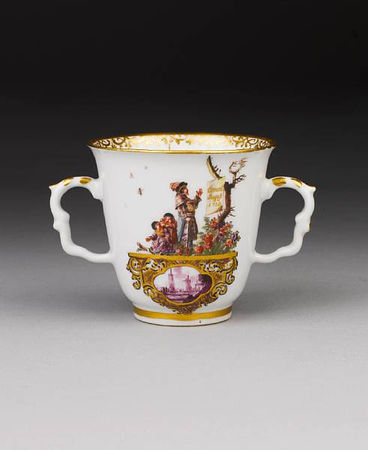
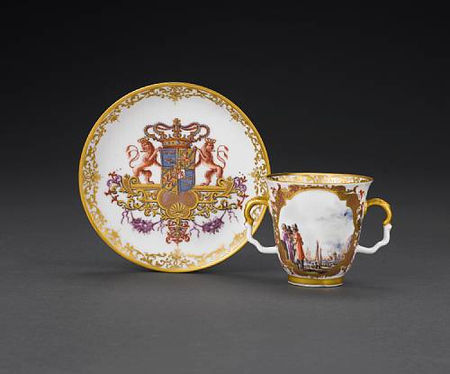
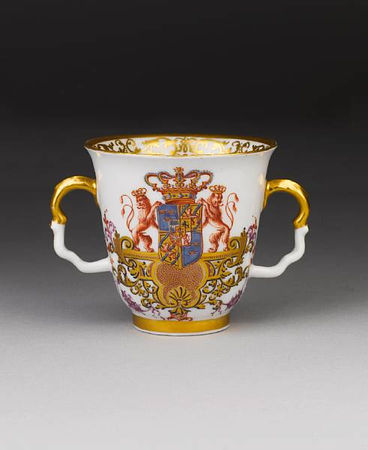
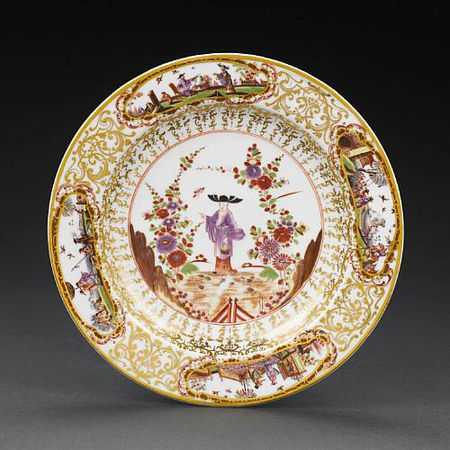
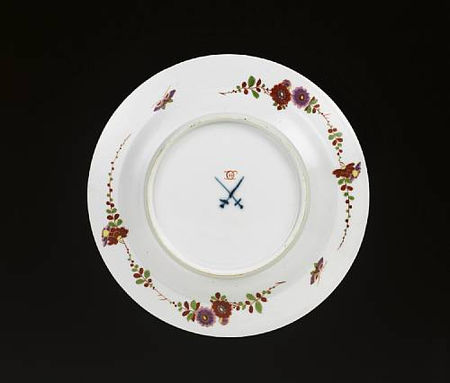
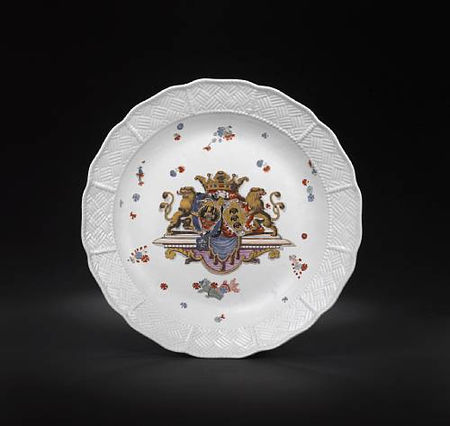
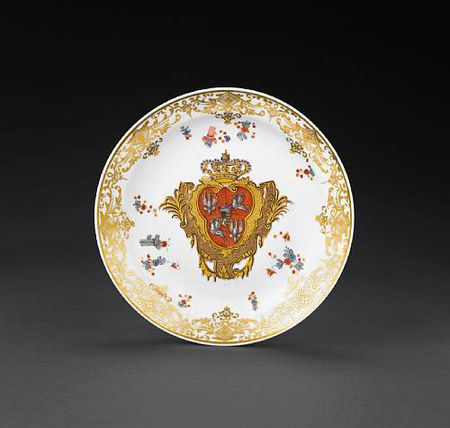
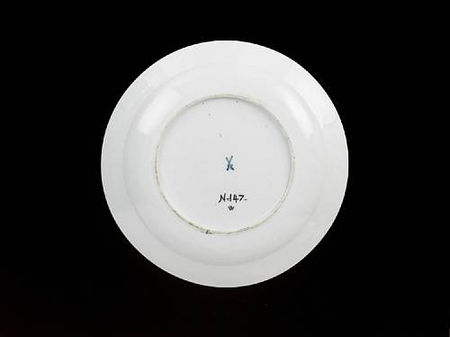

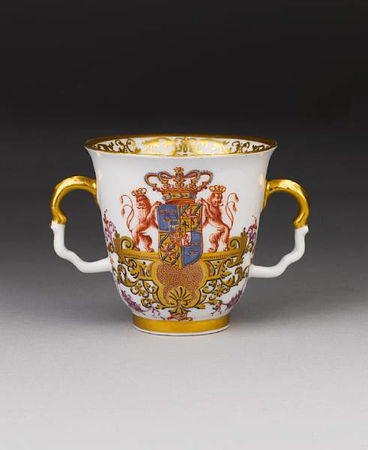
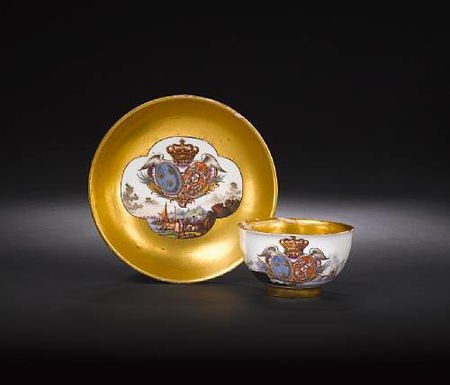
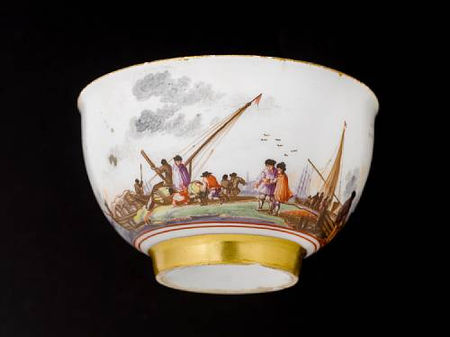



/http%3A%2F%2Fstorage.canalblog.com%2F28%2F56%2F119589%2F129494680_o.jpg)
/http%3A%2F%2Fstorage.canalblog.com%2F04%2F81%2F119589%2F128791640_o.jpg)
/http%3A%2F%2Fstorage.canalblog.com%2F73%2F16%2F119589%2F128381257_o.jpg)
/http%3A%2F%2Fstorage.canalblog.com%2F28%2F03%2F119589%2F126225626_o.jpg)